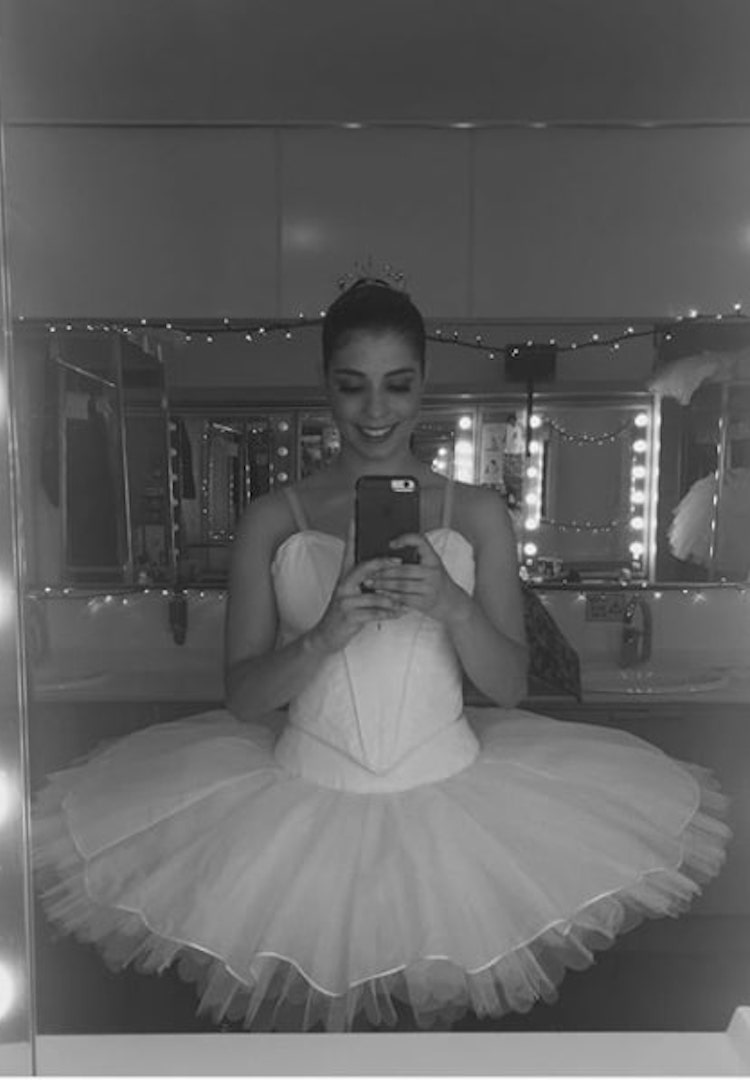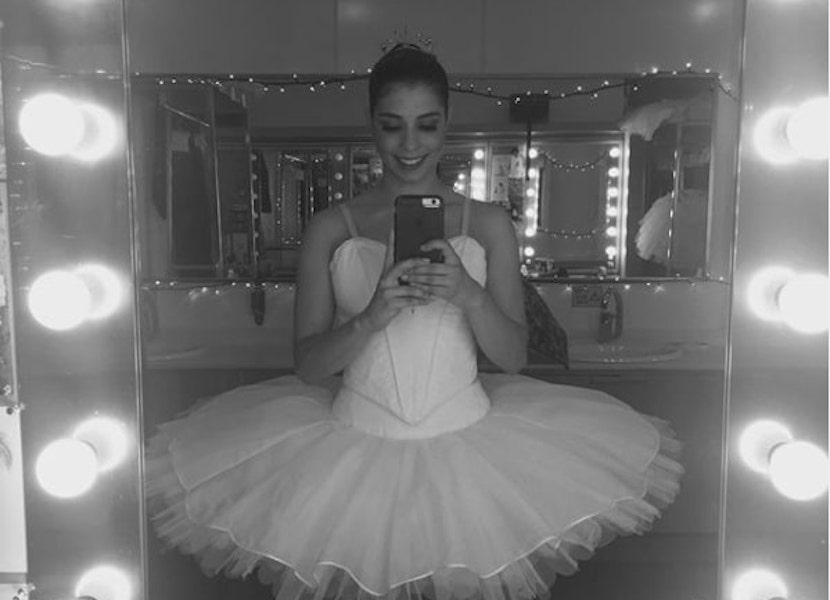What it’s like to be the first Indigenous dancer in The Australian Ballet
Image via Ella Havelka/Instagram
Words by Sally Edwards
Ella Havelka’s two worlds.
This week we welcome a guest editor to Fashion Journal, Rona Glynn-McDonald. Rona is the founder of Common Ground, a not-for-profit organisation educating Australians on Aboriginal and Torres Strait Islander cultures. Rona is joining us for Reconciliation Week, which runs from May 27 to June 3. Read more about Common Ground and Rona’s work here.
As a product of Louis XIV’s court in 17th-century France, ballet’s roots have always been set deep in white, elite, European soil. But Ella Havelka is a Wiradjuri woman from Dubbo and she’s changing the face of ballet as we know it.
Before Ella, The Australian Ballet had never had a First Nations dancer in its 50-year history. But her journey to the corps de ballet was not without hardship. She grew up in country NSW, dependent on only her mum’s income, and she struggled to access the costly and sometimes insular world of ballet.
After graduating from The Australian Ballet School with the aid of scholarships and sponsorships, Ella found herself in jeté-ing between two completely different worlds: the Indigenous contemporary dance theatre, Bangarra, and the still predominantly white Australian Ballet.
Through her dedication to art, story, culture and heritage, Ella has become an icon in an industry where First Nations people are sorely underrepresented.
She shared with me how she has navigated the highs and lows on her journey to success.
Hi Ella! Thanks for talking to me today. Can you tell me a bit about why you got into dancing?
I was always very active as a child and my mother always encouraged me to have a go at everything and anything. One day she brought home a VHS of Swan Lake, I told her I wanted to try ballet and then she took me to a small local dance studio in Dubbo and I’ve basically been dancing ever since.
What has your career path been like?
It’s consisted of two very different roads that I’ve been trying to weave together my whole career. When I was 15, I started full-time training with the Australian Ballet School. Then in 2009 when I graduated, I joined Bangarra Dance Theatre. And in 2013 I become the first Indigenous dancer in the Australian Ballet. So, for the past two years, I’ve been going back and forth between the two companies, Bangarra and the [Australian] Ballet, and I’ve just been trying to find out how these two styles can inform and complement each other.
What is it like switching between Bangarra’s cultural style and the classical style of ballet, both physically and mentally?
They’re both very different styles but they both have a strong emphasis on story. And if I try to maintain what I love about dance and cross over between the two, they can correlate quite easily. But there are challenges. When I went back to ballet after being in Bangarra I had to really try to get my ballet body back and to train hard to get back into my pointe shoes. And I was injured for quite a while but slowly, with time, I was able to overcome this so I could perform again.
And then going into the Bangarra world after being in the ballet world you kind of have to adapt to a different way of working. You have to really think of the internal story before you even start moving. And it’s almost a different way of working because you have to be respectful and listen to what people are trying to teach you and tell you so that you can pay the right respect to the dance and to what you’re trying to perform.
You’re also an artist, do your art and your dance intertwine, or do you like to keep them separate?
I think they have correlations, but obviously, you do things at different times depending on your mood. If I’m trying to calm myself down or be a little bit more mindful, I might sit down and do some weaving to help ground and relax me. Whereas when you’re up and dancing you’re very physical and it’s a very different type of activity. But I think both can inform each other as they’re both strongly connected to story and to culture and to my heritage.
What, if any, challenges have you faced as an Indigenous Australian that might not have existed for your peers?
Financially, classical ballet training is a struggle. I had to apply for a lot of scholarships and sponsorships to pay for my tuition. My mum was a single parent and she really had no means to pay for my fees on just her own income. So, I guess that’s probably the biggest hurdle. It’s just not as accessible for young Indigenous kids.
What advice would you give to your younger self?
Probably not to compare myself to anyone else and to really listen to the people who try to build me up and ignore the people who bring me down. But definitely not comparing is a big one.
Ballet is often portrayed as very ‘white’ in wider media. What’s your take on this? Do you agree?
[Ballet] doesn’t need to be so stereotyped. I think that if ballet was made more accessible then it could be enjoyed by everyone. We’re living in an age where equal opportunity should be afforded to everyone. And I think it is slowly changing but we have a long way to go to outgrow this stereotype.
Throughout your career and in dancing more broadly have you ever felt you’ve been treated differently because of your heritage?
I definitely get a lot of media exposure related to my heritage. Very rarely have I ever been celebrated for just being a dancer. But it’s my birthright and I have to find peace with this and be the best role model that I can be.
What do you love about the industry?
I really love collaborations. When you see two people or two ideas come together from different origins and different backgrounds. I always think that magic happens when you see these sorts of works.
What do you think could improve in the industry?
Like I said before, the accessibility. I’d love to see the world of dance being celebrated and supported in all of its many forms. Sort of like how it is in Europe. They love anything art and dance over there and I would love to see it celebrated like that here in Australia.
Do you think that the Indigenous perspective is embraced enough in art and dance in Australia?
There definitely needs to be more, in my opinion.
Is there anything else you would like to share about your experience?
Well, I guess it’s been tough. Both the Australian Ballet and Bangarra presented me with many obstacles but they’ve also given me many gifts. Through the [Australian] Ballet, my choreographic journey has been supported and I’ve been able to start helping the outreach programs to inspire more Indigenous kids to get into dance. And Bangarra’s always supported my passion for practising traditional Aboriginal basket weaving and it’s also given me the tools to create and lead my own dance workshops. So, that’s kind of how I feel about the different worlds and how they’ve informed me as an artist.
Are you running your workshops at the moment?
Not so much workshops. I’m teaching online ballet classes for Indigenous kids who want to do more ballet. Just as a sort of side project. Myself and one other dancer from Bangarra are doing a half an hour session once a week and a few privates with anyone who wants to join in. Just via Zoom.













